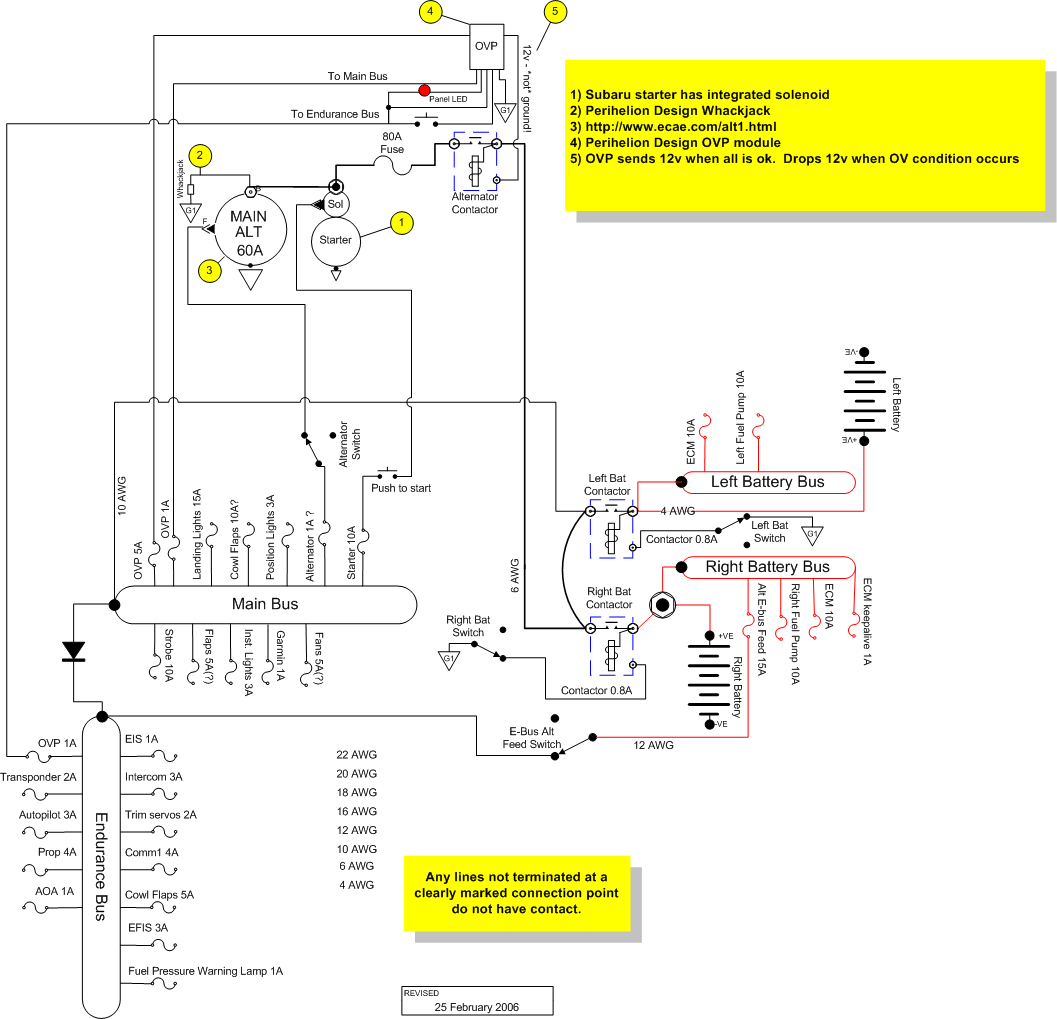21 Nov 2004 Electric system design discussion
Update 20210918: I didn’t install the Eggenfellner Subaru engine, so any post that references that can be ignored or used as a cautionary tale about how to avoid wasting many years and $50k.
My engine requires electricity in order to run, so this is a critical part of my electrical system. I’ve been spending a lot of time investigating the issues. The aeroelectric connection book by Bob Nuckolls is excellent, and has provided me with a lot of information. Also, discussions on the subaruaircraft Yahoo group (run by Jan Eggenfellner) and the aeroelectric-list matronics list have provided me a lot of guidance.
Eggenfellner currently recommends the EXBPUS as the central hub of the wiring system. Even before I read Bob Nuckoll’s critique of the system I had doubts about it, since my goal is to eliminate as many single points of failure as possible. Since making my desision to not use the EXPBUS I’ve read about several people that have had various problems with the EXPBUS.
The engine has one alternator, and I plan to use two batteries. Batteries rarely fail, but having two batteries allows two battery contactors, two battery busses, two runs from the tail to the engine, etc. I will have one battery contactor switch for each battery. The battery contactors will be in the tail with the batteries, and I will also have an always-hot battery bus on each battery. These will each have a connection to a fuel pump, to the ECM (ECU, engine computer), the ECM “keepalive” connection, and the endurance bus – that is the place where other “nice to have” items for completing the flight comfortably will be connected.
The main concern when flying is to run out of either fuel or electricity. Fuel is the highest risk, since it relies mainly on human intervention to ensure that it gets put into the tank when needed. Electricity will run out if the alternator fails, or if we have some other type of failure that causes both batteries to die. I’m more worried about the alternator failing than two batteries failing.
Another thing that could cause me to lose power would be for both fuel pumps to fail, or the ECM to fail. These are also statistically rare events, according to the research I have done.
Alternator failure is assumed in the design, and if this happens, then each battery, when replaced regularly, will provide about one hour of flight time, according to tests run by Gary Newsted. This will have to be confirmed with my installation, since there will be slight variances between installed components.
The other interesting part is the fuel pump automatic switching feature. This is a pressure transducer that will automatically start the backup fuel pump if the pressure from the main fuel pump becomes too low. I’ve discussed this briefly in another article:
The rest of the system is quite similar to the Z11 + Z30 designs explained in the AeroElectric Connection. Here is a diagram:

Last drawing update: 2006-02-25

Sorry, the comment form is closed at this time.